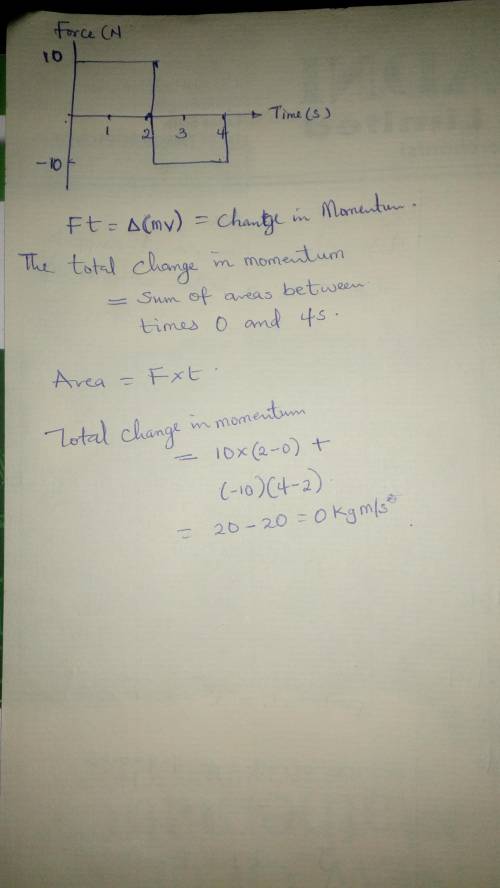
Physics, 23.01.2020 04:31, JERosa12356
The graph shows the force on an object of mass m as a function of time. for the time interval 0 to 4 s, the total change in the momentum of the object is? ( in kg. m/s)
40
20
-20
0graph: square wave from -10 to 10

Answers: 2
Other questions on the subject: Physics


Physics, 21.06.2019 22:30, jasoncarter
The membrane surrounding a living cell consists of an inner and an outer wall that are separated by a small space. assume that the membrane acts like a parallel plate capacitor in which the effective charge density on the inner and outer walls has a magnitude of 7.0 × 10-6 c/m2. (a) what is the magnitude of the electric field within the cell membrane? (b) find the magnitude of the electric force that would be exerted on a potassium ion (k+; charge = +e) placed inside the membrane.
Answers: 1

Physics, 22.06.2019 02:30, scasemere
Mass (kg) force (n) 5 25 10 50 15 75 20 100 a student was trying to find the relationship between mass and force. he placed four different masses on a table and pulled them using a spring scale. the table shows the different masses used in the experiment and the force required to pull each mass. the student concluded that more force was required to pull heavier objects. what comment would you make regarding his conclusion? a) no clear relation can be observed between mass and force from the data. b) there is a direct proportion between the mass and force listed in the table. c) gravity should have been taken into account while performing the experiment. d) there is an inverse proportion between the mass and force listed in the table.
Answers: 2

Physics, 22.06.2019 13:10, pearlvldz
The atoms in a nickel crystal vibrate as harmonic oscillators with an angular frequency of 2.3 × 1013 rad/s. the mass of a nickel atom is 9.75 × 10-26 kg. what is the difference in energy between adjacent vibrational energy levels of nickel? (h = 6.626 × 10-34 j • s, , 1 ev = 1.60 × 10-19 j)
Answers: 2
Do you know the correct answer?
The graph shows the force on an object of mass m as a function of time. for the time interval 0 to 4...
Questions in other subjects:






Mathematics, 10.12.2020 01:10



English, 10.12.2020 01:10







